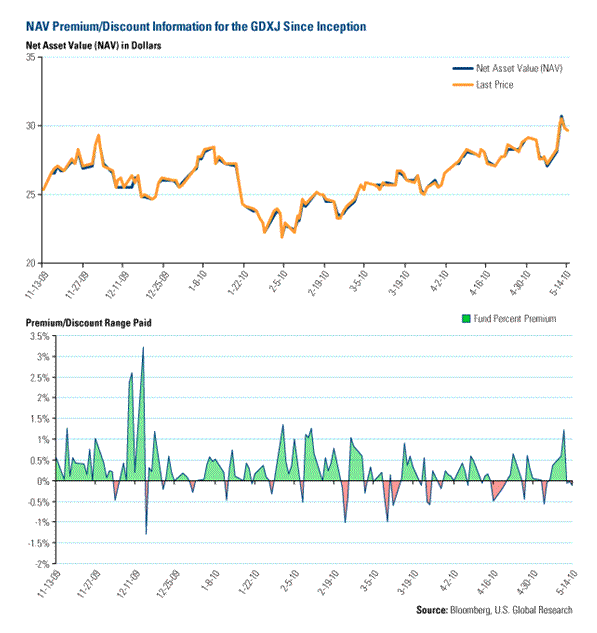ETF investors at risk in next ‘flash crash’
Post on: 1 Май, 2015 No Comment

ChuckJaffe
BOSTON (MarketWatch) — The ‘flash crash’ turned the stock market on its ear during one violent trading day a year ago, but many investors are still vulnerable to the market’s next bungee jump. Their mistake: stop-loss orders on exchange-traded funds — a move that puts shareholders directly in harm’s way.
MarketWatch columnist Mark Hulbert says research suggests massive stock slumps such as the flash crash can’t be prevented.
•
Stop-loss orders come in a number of varieties, and can be a smart strategy for protecting profits. The fundamental idea behind them — a set price to exit a security — makes sense, even for a long-term investor who tries not to be swayed by momentary market movements.
That said, the flash crash on May 6, 2010 exposed how the best intentions can create real problems.
Technically, a stop order is an instruction to sell a security at the current market price. Thus, if your shares of XYZ trade at $100 per share and you want to cap losses at 20%, you could set a stop-loss at $80 per share; if the price falls to that level, the order triggers.
Stop-loss strategies are part of the appeal of exchange-traded funds. ETFs are mutual funds that trade like stocks, priced minute by minute; if you want in or out, you can get the market price the instant you execute the trade.
In contrast, traditional mutual funds are priced at the end of the trading day. Thus, once the market opens — even if you sell after five minutes — you’re along for the ride day’s ride no matter how crazy things get.
Limits of the trade
Now go back to the flash crash, when the Dow Jones Industrial Average DJIA, -0.82% lost 1,000 points, then recaptured 650 of that before the close. In one harrowing 15-minute stretch the market lost about 500 points then got it back. Critics say the incident wiped out more than $850 billion in market value.
An ETF investor with the foresight to put a stop-loss order in place may have thought they were protected against such steep price drops. In fact, using a stop order instead of a “stop-limit” order hit them with the worst of the market’s pain.
During the flash crash the market dropped so fast that instead of getting the pre-determined price, investors got something much lower. Crucially, their stop order simply instructed a sale at the next available market price below the threshold.
Instead, had they used a stop-limit order — selling at $80 per share, but not lower than $75 — their order would not have been filled. While the ETF hit the sell price, no trade could be executed within the $5 range of the order because the market was in free-fall.
“Stop losses are a really bad idea for ETF investors, and the flash crash showed that,” said Paul Justice, director of ETF analysis at investment researcher Morningstar Inc. “It makes no sense to put yourself in a position to lose a lot of money to a spike in the market, and that’s what can happen here.”
Stop, look and listen
Investors tend to manage risk through an asset allocation made without regard to share price, Justice noted: “You invest based on your risk tolerance, not the price band that an asset is trading at, especially not a bottomless price band that you could get if the bottom falls out of the market in another flash crash scenario.”
That’s important to remember on the anniversary of the flash crash, because while regulatory reforms have helped calm the markets the potential for another climactic event is still present. Just this past week, a “basket-bust” had stocks in the health-care sector moving wildly after hours — trades that ultimately were canceled.
There’s also no denying what experts call “fat finger” problems. When regulatory reform allowed investors to trade without market-makers or other intermediaries, it drove down trading costs and improved efficiency, but it also raised the potential for someone to enter a trade of, say, 100,000 shares with an extra zero, so that the order gets placed for 1 million shares.
Market makers were a fail-safe against these mishaps. Today, the trade gets booked, and the error can wreak havoc.
“We get emails on erroneous trades, and they’re not really newsworthy when they happen all the time and there is no real impact,” said Michael
Buek, senior trader at mutual-fund company The Vanguard Group. “It feels like there are two or three of them a day and, then, some days it feels like we are getting 70 of them.”
While “limit-up” and “limit-down” market reforms are in the works that would slow the kind of run caused by fat-fingered trades, regulators still have not fully enacted those changes. Even when they do, ETF investors can’t be complacent and assume they can keep the same old protective strategies.
“What we keep hearing is that little glitches and problems are happening all the time, and that they are meaningless,” said Michael S. Falk of Michael S. Falk Asset Consulting in Chicago. “They’re not meaningless if you lose money to them. And someone will lose money in the next flash crash, which is why you need to have learned lessons from the first one.”














